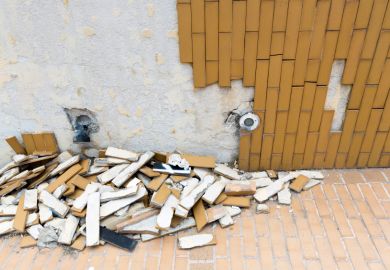Academics who are tempted to remain in pyjamas during the working day should think again, says a study that has linked the practice to a deterioration in mental health.
With many scholars facing another lengthy period of working from home, a paper published in the Medical Journal of Australia has warned that those who stay in bedroom attire are twice as likely to report a worsened state of mental health.
According to the study, which drew on a survey of medical researchers in Sydney during the first Covid-19 lockdown from late April to mid-May last year, some 60 per cent of scientists admitted wearing pyjamas on at least one occasion in lockdown, with 14 per cent saying they typically wore pyjamas during Zoom calls with colleagues.
Some 28 per cent of scientists said they wore pyjamas at least once a week – a cohort who were twice as likely to report worsened levels of mental health than those who dressed normally each day, according the study, by David Chapman and Cindy Thamrin, from the Woolcock Institute of Medical Research, which is affiliated with the University of Sydney.
Dr Thamrin told Times Higher Education that the finding was consistent with evidence supporting “blue pyjama syndrome”, in which hospital patients who remained in bedwear during longer stays were assessed as being more depressed than those who changed into day clothes. However, those who wore pyjamas did not report lower levels of productivity, she added.
“To those who choose to continue working from home at least some part of the week, we would hope to reassure them that the occasional day in pyjamas won’t affect their productivity, but perhaps they should consider changing out of them as a matter of routine for the sake of their mental health,” said Dr Thamrin.
The study, which drew on 163 responses from staff at five medical institutes in Sydney, also delved into the reality of home working for researchers. The most frequently cited workplace area was the kitchen or dining table, mentioned by 44 per cent of scientists, while 28 per cent worked from their own office and 22 per cent shared an office.
Surprisingly, 3 per cent of respondents reportedly worked from the bathroom during lockdown. “Someone suggested that, perhaps, the bathroom had the best wireless internet connection,” said Dr Thamrin.
The study also looked at other problems caused by working from home. Some 42 per cent said calls had been disrupted by colleagues’ children and one respondent was interrupted by a sleepwalker, “although it is unclear whether this was during a daytime nap or a night meeting”, the paper says.
POSTSCRIPT:
Print headline: PJ wearers blue but productive
Register to continue
Why register?
- Registration is free and only takes a moment
- Once registered, you can read 3 articles a month
- Sign up for our newsletter
Subscribe
Or subscribe for unlimited access to:
- Unlimited access to news, views, insights & reviews
- Digital editions
- Digital access to THE’s university and college rankings analysis
Already registered or a current subscriber?










